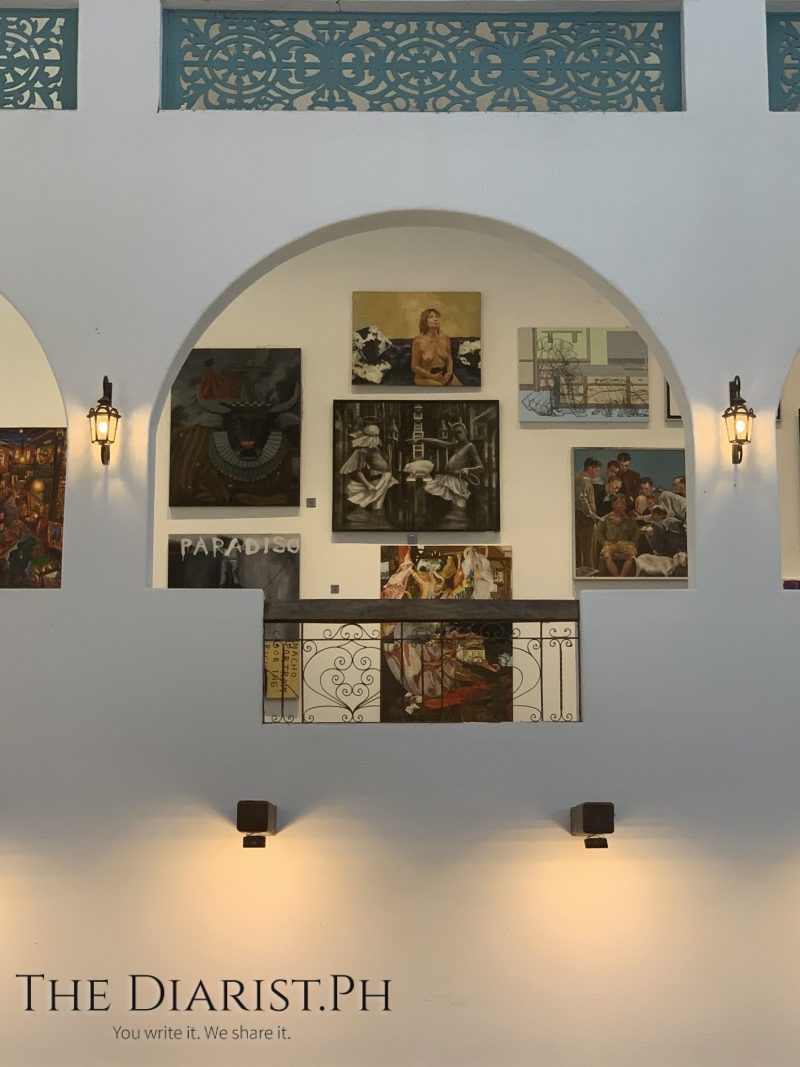
Pinto Art Museum has expanded its area and attractions. (Photo by TheDiarist.ph)

Pinto Art Museum is rich with architecture details. (Photo by TheDiarist.ph)
Arriving at Pinto Art Museum, we were greeted by the sight of visitors getting off vehicles, including tricyles, young and old, families and barkada. Who wouldn’t be happy at the sight of people flocking to a gallery/museum? But just as important, who wouldn’t be happy for Dr. Joven Cuanang, the visionary who fought windmills, so to speak, all these years, just to be able to share his passion for the country’s arts and culture. This former medical director of St. Luke’s Global and one of the country’s leading neurologists built this repository of Philippine contemporary art, and turned it into a popular destination, cited by world travel sites.
On February 5, this weekend, Pinto Art Museum presents Algodon, a fashion show featuring Ilocos Norte’s pure cotton in the collections of Pepito Albert, Vic Barba, JC Buendia, Anthony Nocom and Randy Ortiz. Directed by Jackie Aquino, it is a farm-to-fabric-to-fashion journey for the indigenous fiber of the North.
It is yet another experience to be had in this destination in Antipolo. From being a gallery featuring the paintings and sculptures of contemporary artists, notably the group that became known in the ‘80s as Salingpusa, the members of whom are now among the country’s sought-after artists, Pinto Art Museum also has been known in recent years as a nature sanctuary, a place for the healing of the mind and soul. The estate, spread over more than two hectares of hilly terrain, is also an arboretum where trees of various species grow—trees weren’t cut down as Pinto expanded its land area through the decades. This vast botanical garden with its varieties of tree and plant species has become the organic setting of a vast art collection—a thousand paintings and sculptures.
This promotes Dr. Cuanang’s philosophy that art is the healer of the individual and of society.

Art installation at Pinto Art Museum
Walking around the garden, you see sculptures and art installations. There are so many Instagrammable spots so it is no surprise that people come. In fact, Dr. Cuanang’s concept of Pinto Art Museum antedated the Instagram and social media.
The afternoon we visited Dr. Cuanang at Pinto Art Museum, we reminisced the early days of Pinto Art Museum, an art/culture/ecology endeavor we’ve seen grow through the decades.
“Back in 1979, (fresh from medical studies at Harvard), I wanted to stay put in the country. I was teaching and busy with my clinical practice,” Dr. Cuanang recalled.

Pinto Art Museum is filled with interesting corridors. (Photo by TheDiarist.ph)
His home and garden on the hills in Antipolo became his respite from work.
On Dec. 3, 1999, at the turn of the century, the group thought of celebrating the new century. “Pinto was born in the beginning of the new century,” he said. It augured an era of new art forms/dialogues, “new positivities.”
It became the home of budding artists who weren’t given the chance to exhibit in the city’s established galleries. The young artists would “show” their works in the Pinto backyard— literally would hang them on the “sampayan” (clothes line) that stretched from one end of the vast garden to another. To Dr. Cuanang’s surprise, the works sold well, and before long, from this loose assembly of visual artists who would be known as Salingpusa came many of today’s foremost artists.

Joy Mallari’s ‘Mawalang Galang Po’
Dr. Cuanang is what you can describe as a right/left-brain thinker, where the discipline of science and the creativity of the arts turn into a potent blend. Also, what’s important is that he has been given once-in-a-lifetime opportunities to help his fellowmen and to make a difference in society. For instance, when he was medical director of the newly built St. Luke’s Global in BGC, Taguig, he wanted the vast space to display art because he believed that art—the visual flight of one’s imagination—could help a patient heal. He had a creative business solution: he asked the leading artists, including his bosom friend, the National Artist BenCab, to create works for the medical center, and in turn, the medical center would grant each artist a medical insurance.

Nook has interesting art installation. (Photo by TheDiarist.ph)
Today, Dr. Cuanang’s focus is on what he considers as “the totality of human conditions,” the need to document “social upheavals.”
“As I grow older,” he says he wants to focus on the conditions people try to cope with, such as the anxiety aggravated by the pandemic. His approach is wholistic or integrated healing, beyond medicine, and into the arts, culture, lifestyle, even ecology.

Architecture and art at Pinto Art Museum (Photo by TheDiarist.ph)
In the February 5 fashion show, when he gathers an audience for the Ilocos cotton and the community that grows it, he explores yet another platform of healing: the runway. Now that should be something to see.
Algodon, February 5, 2023, 5p.m., Gallery 7, Pinto Art Museum, 1 Sierra Madre, Grand Heights, Antipolo
Read more:
At Pinto, José Santos III makes towering sense of life and the pandemic
Source link
